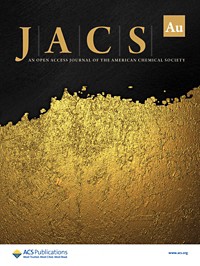Advertisement
Grab your lab coat. Let's get started
Welcome!
Welcome!
Create an account below to get 6 C&EN articles per month, receive newsletters and more - all free.
It seems this is your first time logging in online. Please enter the following information to continue.
As an ACS member you automatically get access to this site. All we need is few more details to create your reading experience.
Not you? Sign in with a different account.
Not you? Sign in with a different account.
ERROR 1
ERROR 1
ERROR 2
ERROR 2
ERROR 2
ERROR 2
ERROR 2
Password and Confirm password must match.
If you have an ACS member number, please enter it here so we can link this account to your membership. (optional)
ERROR 2
ACS values your privacy. By submitting your information, you are gaining access to C&EN and subscribing to our weekly newsletter. We use the information you provide to make your reading experience better, and we will never sell your data to third party members.
Physical Chemistry
Crystal structure databases to have single portal
Organizations developing one-stop data deposition and search tool for organic and inorganic species
by Jyllian Kemsley
March 29, 2017
| A version of this story appeared in
Volume 95, Issue 14

Two of the main crystallographic structure databases, the Cambridge Structural Database (CSD) and the Inorganic Crystal Structure Database (ICSD), will have a single portal for users to deposit and search for data starting later this year, their operating organizations announced on March 27.
CSD contains 875,000 entries for organic and metal-organic species and is operated by the Cambridge Crystallographic Data Centre in England. ICSD contains 187,000 inorganic structures and is operated by FIZ Karlsruhe—Leibniz Institute for Information Infrastructure.
The ability to search both databases simultaneously “will be of tremendous value for researchers, especially those that work at the interface of organic, inorganic, and coordination chemistry,” comments Tomislav Friščić, a chemistry professor at McGill University and a member of the governing council of the American Crystallographic Association. “Modern chemical science is all about crossing borders and interfaces, so this is really a constructive and timely development.”
“All of the existing expert data curation and publishing processes will remain in place” to ensure high-quality information, the database operators say in a press release. “The new joint deposition and access portals will be built in Cambridge and based on the Cambridge Crystallographic Data Centre’s recently developed infrastructure for data deposition, processing, searching, and sharing, all extended to meet the needs of the inorganic chemistry community.”




Join the conversation
Contact the reporter
Submit a Letter to the Editor for publication
Engage with us on Twitter